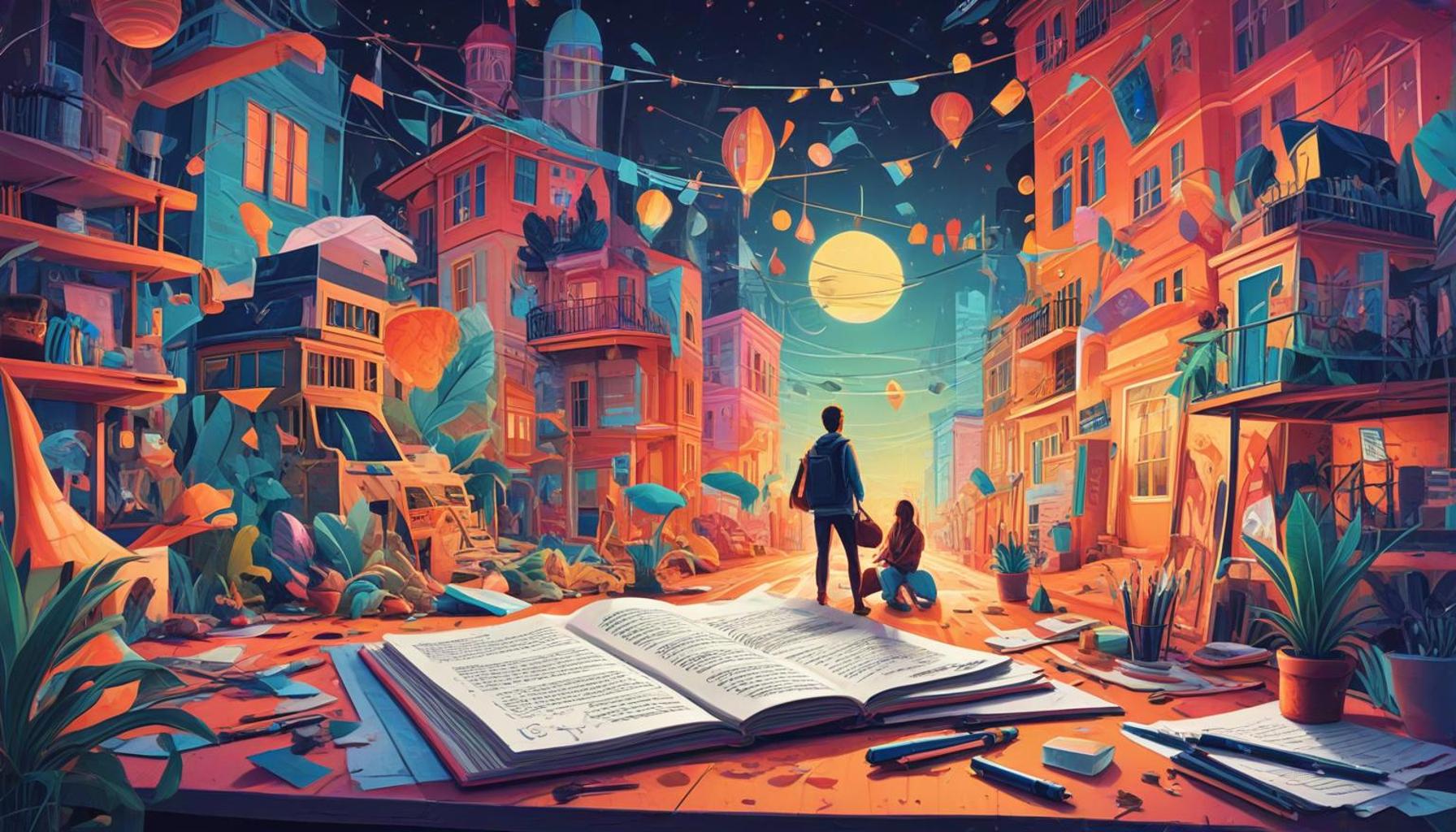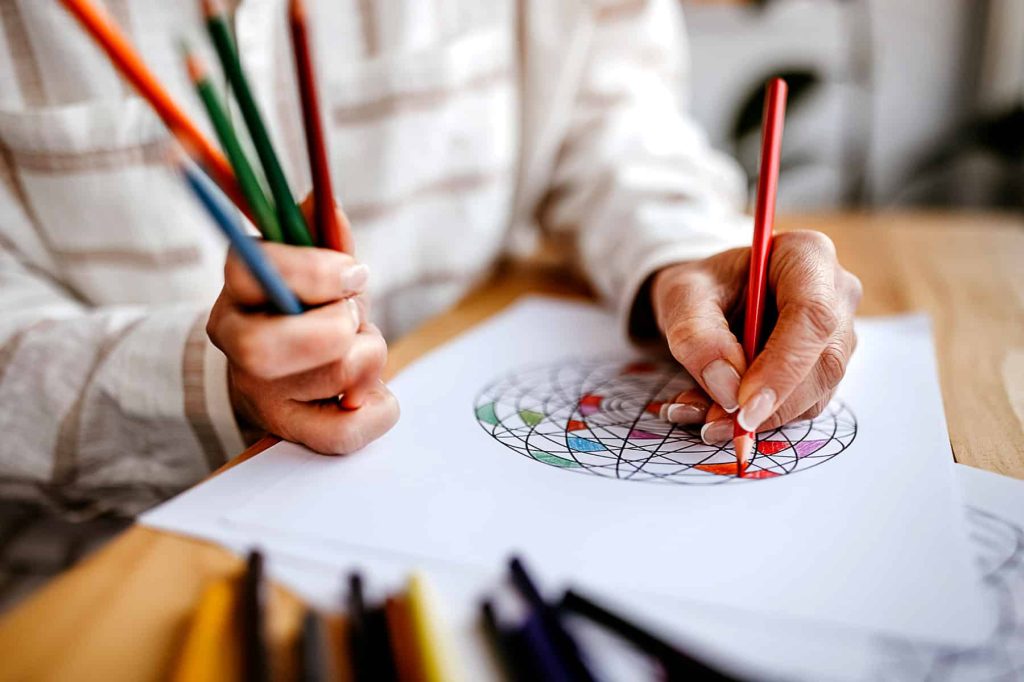The Intersection of Illustration and Writing: How Images Can Inspire Imaginative Narratives

The Power of Visuals in Storytelling
Every story begins with a spark of imagination, but what if that spark was ignited by an image? Illustration and writing share a profound relationship, where visuals can transform ideas into captivating narratives. Through the interplay of illustrations and words, creators have the ability to forge powerful connections that resonate with audiences.
Consider how illustrations:
- Enhance emotional depth by visually representing characters’ feelings. For instance, a character’s expression in an illustration can communicate sorrow that text alone might struggle to convey. Think of classic novels turned graphic novels, like “Persepolis” by Marjane Satrapi, where the stark visual style amplifies the emotional weight of the text.
- Set the scene, providing context before a word is even read. The artwork can depict a lush forest or a bustling city, instantly grounding the reader in the atmosphere of the story. Consider how the stunning illustrations in children’s books, such as those in “Where the Wild Things Are” by Maurice Sendak, create a visceral sense of place.
- Introduce unique perspectives that words alone may not convey. An artist’s interpretation can present a narrative from an entirely new angle, challenging readers to visualize scenarios beyond their typical frameworks. For example, the graphic novel “Watchmen” by Alan Moore utilizes innovative visual storytelling techniques that allow readers to engage with complex themes of morality and power dynamics.
These elements can lead to richer, more engaging tales, opening up new avenues for creativity. Writers often find inspiration in illustrations, using them as prompts that evoke original storylines and foster character development. The interplay of visual and textual formats leads writers to approach their narratives from innovative angles, creating stories that are layered and textured.
With the rise of digital media, platforms like social media and websites continue to blur the lines between art and literature. This interaction invites an influx of voices where diverse artists illustrate and writers narrate, forming a collaborative ecosystem. Sites like Instagram and TikTok have ushered in a new era where visual storytelling thrives, enabling creators to share their narratives in ways that engage wider audiences and innovate traditional forms.
In essence, understanding this synergy not only enhances storytelling but also challenges traditional boundaries. As more creators harness these tools, we begin to see an explosion of new forms of expression and creativity. Explore how images have the power to ignite imagination, urging us to observe the world through a vibrant, multifaceted lens that encourages exploration and emotional engagement.

DIVE DEEPER: Click here to discover the magic of narrative
The Synergy of Imagery and Text
The marriage of illustration and writing is not just a creative alliance; it is a dynamic partnership that speaks to the core of storytelling. At this intersection, illustrations breathe life into words, enriching narratives and beckoning readers into immersive worlds that might otherwise remain unexplored. This synergy propels both seasoned writers and aspiring novelists to reconsider their storytelling approach, ultimately crafting narratives that are not only visually enticing but also deeply engaging.
Research indicates that readers often find novels accompanied by illustrations more captivating. The combination stimulates multiple senses, which can enhance understanding and retention of the narrative. Key aspects of this interplay include:
- Visual Metaphors: Illustrations can serve as visual metaphors, encapsulating complex ideas succinctly. A single image can evoke a plethora of emotions and interpretations, encouraging readers to reflect on the underlying themes. A powerful example is the artwork in “The Arrival” by Shaun Tan, which uses rich and evocative imagery to depict the immigrant experience without relying on words.
- Character Development: Illustrations can immortalize a character’s essence in a way that words may struggle to achieve. A reader can instantly gauge the personality traits of a hero or villain through their visual representation. The fantastical characters in illustrated works, such as “The Hobbit” by J.R.R. Tolkien, take on a life of their own under the artist’s brush, making them more memorable.
- Cultural Context: Images can provide context that enhances the narrative’s cultural grounding. Understanding the subtleties of a particular setting can entirely alter the reader’s comprehension of the story. Consider the illustrated adaptations of classics like “The Great Gatsby,” which often highlight the lavish aesthetics of the Roaring Twenties, enriching the reader’s experience.
This fusion of art and text pushes creative boundaries and invigorates the storytelling landscape. As the illustration enhances the narrative’s fabric, writers are inspired to think beyond conventional storytelling methods. They begin to visualize not just how characters behave but how they look, what their world feels like, and how themes resonate visually.
Furthermore, with the emergence of technology, the illustration and writing dynamic has evolved into new forms of storytelling. Illustrated blogs, digital comics, and social media platforms offer innovators a canvas to meld their artistic talents with literary creativity. This contemporary landscape invites experimentation, enabling creators to leverage visually enigmatic content to engage audiences in novel ways—think of the stunning visual essays on platforms like Medium that marry rich imagery with thought-provoking prose.
In essence, as illustration works its magic alongside writing, a profound narrative experience unfolds. It’s a call to creators to harness this alliance and explore uncharted territories of imaginative narratives. This exploration is not merely about combining forms; it is about unlocking a deeper understanding of human experience through a fusion of visual artistry and literary expression.
| Advantage | Description |
|---|---|
| Visual Storytelling | Images allow writers to convey emotions and nuances that words alone might miss, creating a deeper connection with the audience. |
| Enhanced Creativity | Illustrations can serve as a source of inspiration, sparking new ideas and perspectives that can lead to unique narrative directions. |
DISCOVER MORE: Click here to dive deeper
Illustration as a Narrative Catalyst
The role of illustration in shaping narratives extends beyond mere embellishment; it serves as a catalyst that can spark innovative ideas within writers. When authors collaborate with illustrators, they often find their creative processes enriched, allowing for a conversation between image and text that fuels inspiration. This interaction can lead to groundbreaking storytelling approaches and new genre innovations.
Consider how graphic novels, a blend of visual art and literature, have redefined storytelling. Works like “Maus” by Art Spiegelman and “Persepolis” by Marjane Satrapi have not only captivated audiences but also delivered powerful messages about history, identity, and trauma. These narratives demonstrate how illustrations can deepen emotional understanding and convey complex themes in ways text alone may struggle to achieve.
The educational field has also seen significant benefits from this synergy. Illustrated children’s books highlight the profound impact of images on young readers’ understanding of the narrative structure. Research conducted by the National Institute for Literacy found that children exposed to both illustrations and text engage cognitively at a higher level, enhancing their comprehension skills significantly. Noteworthy examples include “Where the Wild Things Are” by Maurice Sendak, where minimal text coupled with vivid imagery invites children to explore their imaginations fully.
- Interactive Storytelling: Today’s digital landscape has ushered in a new era of storytelling, wherein interactive elements and illustrations collide to engage audiences in unprecedented ways. Platforms like Webtoons allow creators to produce scrolling comics where illustrations play an integral role in pacing and narrative flow. This innovative format not only makes stories more dynamic but also allows readers to interact with the narrative, adding layers of involvement that traditional texts cannot offer.
- Artistic Style as Narrative: The unique artistic styles of illustrators can significantly influence the tone and mood of a story. For instance, the whimsical illustrations in “The Adventures of Tintin” by Hergé impart a lighthearted, adventurous spirit, thereby shaping the audience’s expectations and emotional responses. In contrast, stark, minimalist visuals in works like “The Arrival” can elicit reflective and poignant insights, prompting readers to engage more deeply with the story’s themes.
Moreover, the intersection of writing and illustration fosters inclusivity in storytelling. Illustrated narratives allow diverse voices to emerge, breaking linguistic and cultural barriers. For instance, graphic memoirs from creators like Yumi Sakugawa and Thi Bui address cultural identity and personal history through their compelling images and narratives. The visual representation of their stories transcends spoken language, inviting readers from various backgrounds to connect with the universal strands of human experience.
As the dialogue between illustration and writing continues, both forms expand their horizons, allowing creators to push past traditional boundaries. Through collaboration, both writers and artists are increasingly embracing the notion that each element enhances the other, thereby crafting narratives that enthrall and inspire. The opportunities for revolutionary storytelling are endless, waiting for innovators willing to explore the vast territory that lies at this intersection.
DISCOVER MORE: Click here to learn how artistic expression can enhance your mental health
Conclusion
The intersection of illustration and writing undeniably transforms the landscape of storytelling. By melding visual art with textual narrative, creators launch into a realm where imagery breathes life into words, fostering deeper connections and enhancing emotional resonance. Illustrated works, from graphic novels like “Persepolis” to children’s classics such as “Where the Wild Things Are,” illustrate how visual elements can convey complex themes and engage audiences in ways that pure text may not. This synergy not only captivates readers but elevates the act of storytelling itself.
Moreover, the continued evolution of interactive storytelling in the digital space propels this discourse further, inviting audiences to engage actively with narratives. Platforms like Webtoons showcase the ability of images to influence pacing and reader engagement, opening paths to innovative narrative inventions. The unique artistic styles of illustrations aid in shaping the mood and tone, adding richness to the narratives that resonate with diverse audiences.
As the collaboration between illustrators and writers flourishes, the potential for cultivating inclusive and varied tales emerges. Creators are increasingly challenged to embrace this partnership, which serves as a storytelling enhancement rather than an addition. By recognizing the profound role of illustration in narrative development, writers and artists can explore new dimensions of creativity, pushing existing boundaries and redefining what it means to tell a story. This fusion of image and text is not merely a trend; it’s a powerful invitation to rethink our understanding of narrative and the myriad of ways we communicate human experience.
Related posts:
Writing for the Future: The Influence of Science Fiction on Innovation and Creative Thinking
Imaginative Writing as a Form of Exploration of the Unconscious: Dreams and Reality in Creative Narr...
The Importance of Research in Imaginative Writing: How Facts and Fiction Can Intersect
Writing for Change: How Imaginative Narratives Can Address Social and Environmental Issues
Writing as Therapy: How Imaginative Writing Can Help with Emotional Expression
The Influence of Imaginative Writing on Social Connection and Community Creation

Linda Carter is a writer and creative hobbies expert specializing in crafting, DIY projects, and artistic exploration. With extensive experience helping individuals discover their creative potential and bring their ideas to life, Linda shares her knowledge on our platform. Her goal is to empower readers with practical tips, inspiring ideas, and step-by-step strategies for success in the world of creative hobbies.